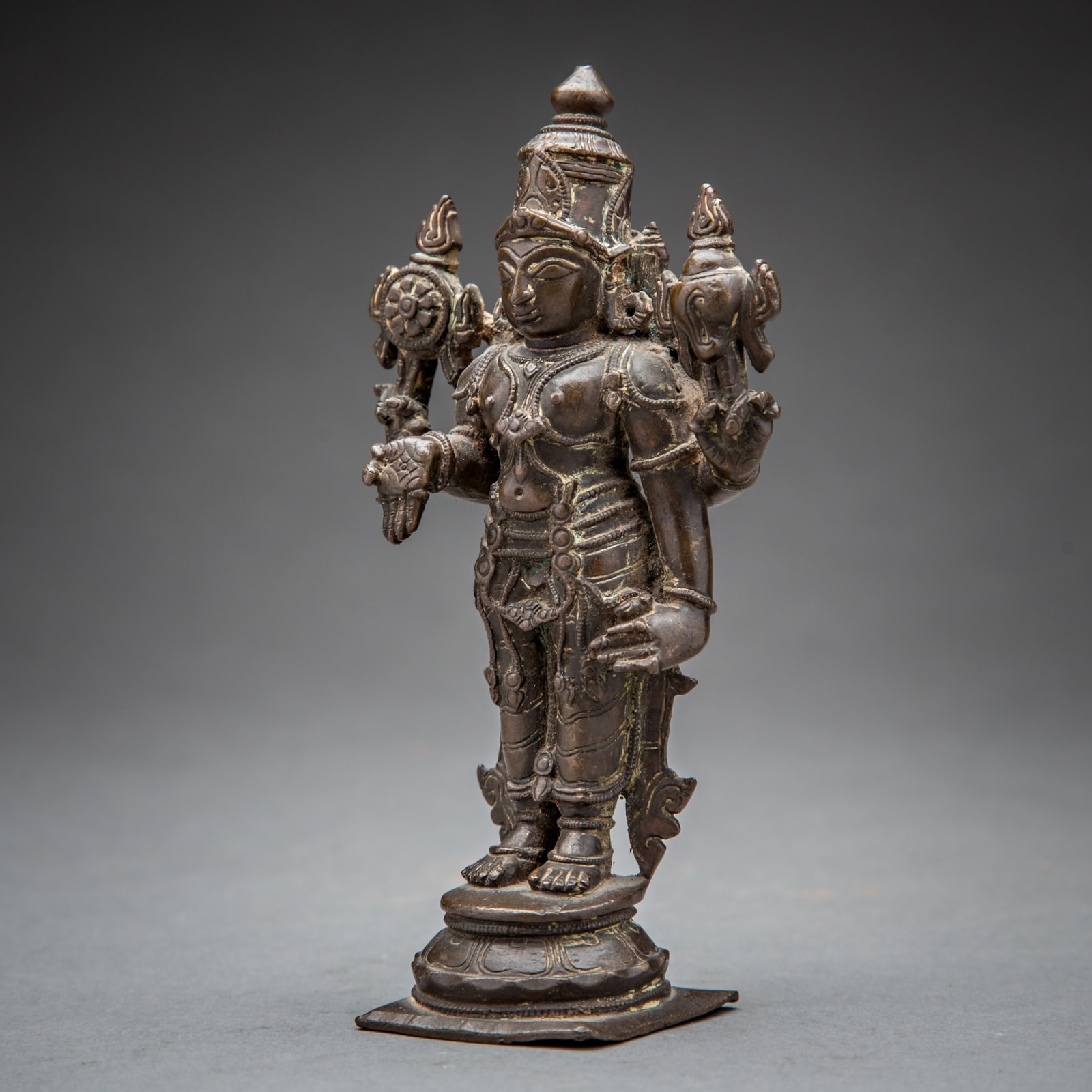Bronze Figure of Vishnu, 1750 CE - 1850 CE
Brass/Bronze
12.4 x 6.3 cm
4 7/8 x 2 1/2 in
4 7/8 x 2 1/2 in
OF.021
Further images
This is a highly ornate and complex figure of Vishnu, in the traditional form as described in the Puranas. His four arms hold the chakra (wheel), mace, lotus and conch...
This is a highly ornate and complex figure of Vishnu, in the traditional form as described in the Puranas. His four arms hold the chakra (wheel), mace, lotus and conch shell, all of which have significance for Vaishnavite Hindus for whom Vishnu is the supreme deity.
The ornate pedestal base suggests a southern Indian origin, while the good patination and use wear suggest a date in the 18th to 19th centuries. The rendering is traditional and well-executed; as it was designed to be viewed from the front, the back is comparatively plain when compared to the supremely ornate front of the piece.
This is an attractive and mature piece of Indian religious art.
The ornate pedestal base suggests a southern Indian origin, while the good patination and use wear suggest a date in the 18th to 19th centuries. The rendering is traditional and well-executed; as it was designed to be viewed from the front, the back is comparatively plain when compared to the supremely ornate front of the piece.
This is an attractive and mature piece of Indian religious art.







